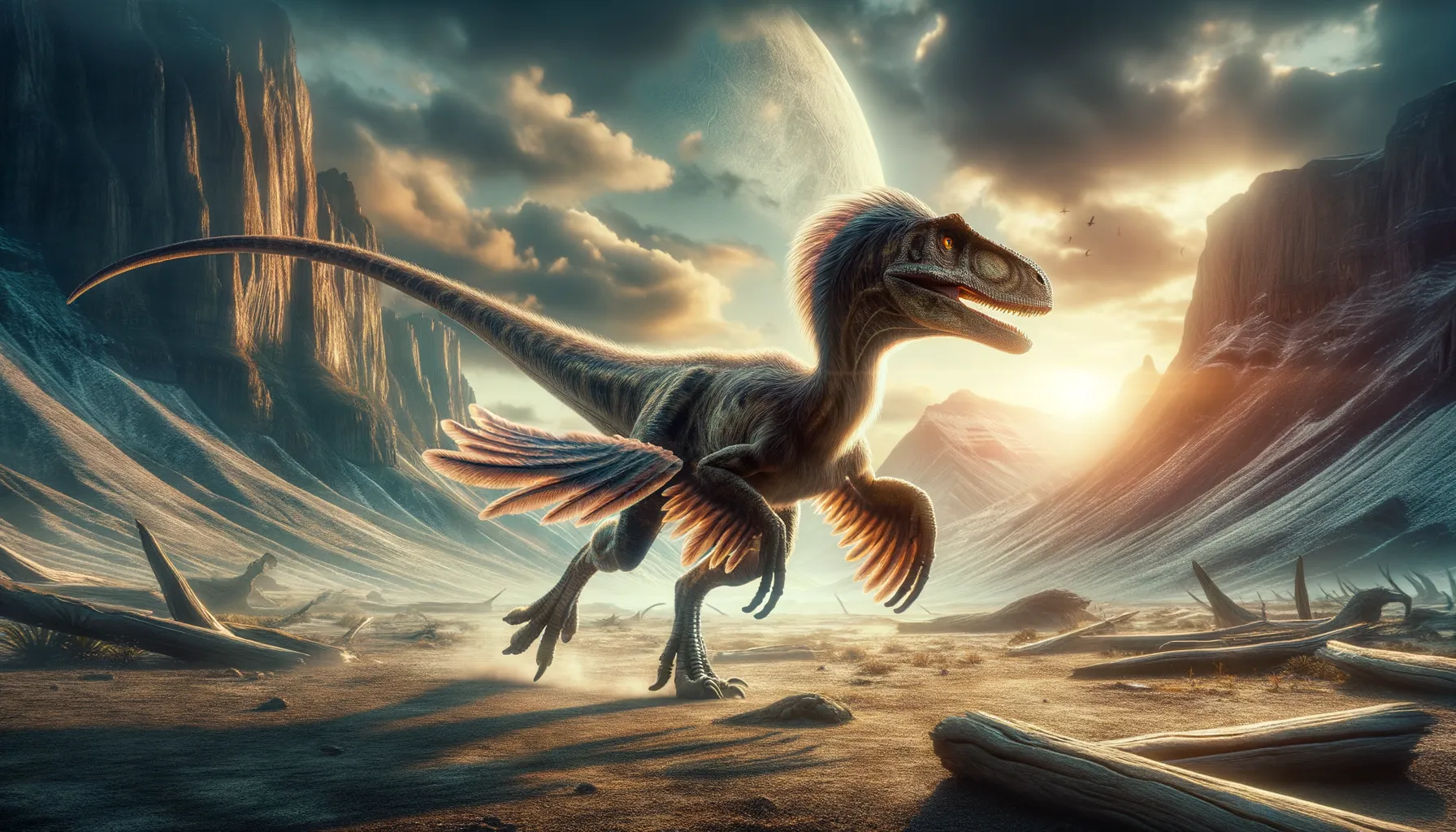
Notatesseraeraptor
Swift and cunning predator of ancient Europe.
Period
Jurassic
Length
Measured roughly 5 meters from head to tail.
Height
Approximately 2 meters tall at the hip.
Weight
Estimated to be around 400 kilograms.
Notatesseraeraptor is a theropod dinosaur that roamed the Earth during the late Jurassic period. Known for its swift movements and keen predatory instincts, this dinosaur inhabited what is now Europe. Its discovery brought new insights into the diversity of dinosaur species of its time. It had a relatively lightweight build and possibly sported feathers, contributing to its agility and adaptability in a prehistoric landscape dominated by larger predators.
Diet
Notatesseraeraptor was carnivorous, preying on smaller dinosaurs and possibly small mammals or reptiles. Its sharp teeth and agile body made it a formidable hunter, capable of catching swift-moving prey.
Hunting
This dinosaur likely relied on stealth and speed to hunt, using its agility to outmaneuver prey. It might have hunted in small groups, similar to modern-day raptors, enhancing its chances of a successful catch.
Environmental challenges
Notatesseraeraptor faced competition from larger predators that shared its habitat, requiring it to hone its hunting skills and quick reflexes for survival. Climate fluctuations would have influenced prey availability, demanding adaptability in diet and hunting strategy. This period also saw occasional volcanic activity, impacting local ecosystems. Survival depended on its ability to navigate these changes effectively, possibly by migrating to more stable or resource-rich areas.
Speed
Estimated to be moderately fast for a dinosaur of its size.
Lifespan
Potentially lived for several decades, comparable to other theropods.
First discovery
Discovered in Switzerland in 2017.
Fun Facts
- Notatesseraeraptor was a small-sized dinosaur that lived during the Late Triassic period about 210 million years ago.
- This dinosaur belonged to a group known as theropods, which also includes famous meat-eaters like Tyrannosaurus rex.
- Notatesseraeraptor was discovered in Switzerland, highlighting that dinosaurs roamed parts of Europe long ago.
- Unlike many theropods, Notatesseraeraptor might have had a more varied diet, possibly including both meat and plants.
- The name Notatesseraeraptor means 'mosaic hunter,' which reflects its mix of features seen in other carnivorous dinosaurs.
- Fossils of Notatesseraeraptor show it had sharp teeth and claws, suggesting it was well-adapted for hunting.
- Scientific studies indicate that Notatesseraeraptor had a relatively lightweight build, making it agile and swift.
Growth and Development
Young Notatesseraeraptors likely grew rapidly to reach a size capable of self-defense and independent hunting. During their juvenile stages, they might have relied on the protection of adult members or remained concealed in safe habitats. Growth rings in fossil bones suggest periods of slowed development, possibly linked to seasonal resource scarcity. Maturation brought refined hunting skills and increased territorial range.
Habitat
Inhabiting forested regions, it thrived in environments offering both cover and diverse prey options. The lush vegetation provided ample hiding spots for ambush hunting. These areas were interspersed with open plains, facilitating swift movement. Seasonally varying resources challenged its survival, demanding a semi-nomadic lifestyle.
Interaction with other species
As a mid-tier predator, it coexisted with larger carnivorous dinosaurs, needing to avoid confrontations with top predators like Allosaurus. Its presence influenced prey populations, maintaining ecological balance. Occasionally, it may have scavenged from kills left by bigger predators. Within its ecological niche, it played a crucial role in maintaining the health of its habitat.
Natural lifespan
Naturally, it could live up to several decades.
Reproduction
Notatesseraeraptor likely reproduced by laying eggs in nests, which may have been guarded by one or both parents until hatching. Clutch sizes were probably small, balancing the need for protective care with the survival of offspring. Hatchlings were likely precocial, moving independently shortly after birth.
Social behaviour
Social structure might have been loosely organized, with small family groups or solitary individuals. These dinosaurs may have employed communication tactics like calls or displays to warn of danger or attain mates. Social bonds could have been crucial during hunts or when rearing young.
Fossil locations
Fossils of Notatesseraeraptor have primarily been found in Switzerland, providing insights into the Jurassic ecosystem of Europe. The discoveries include partial skeletons that have helped reconstruct its appearance and lifestyle. These specimens have contributed to understanding the evolutionary paths of theropod dinosaurs.
